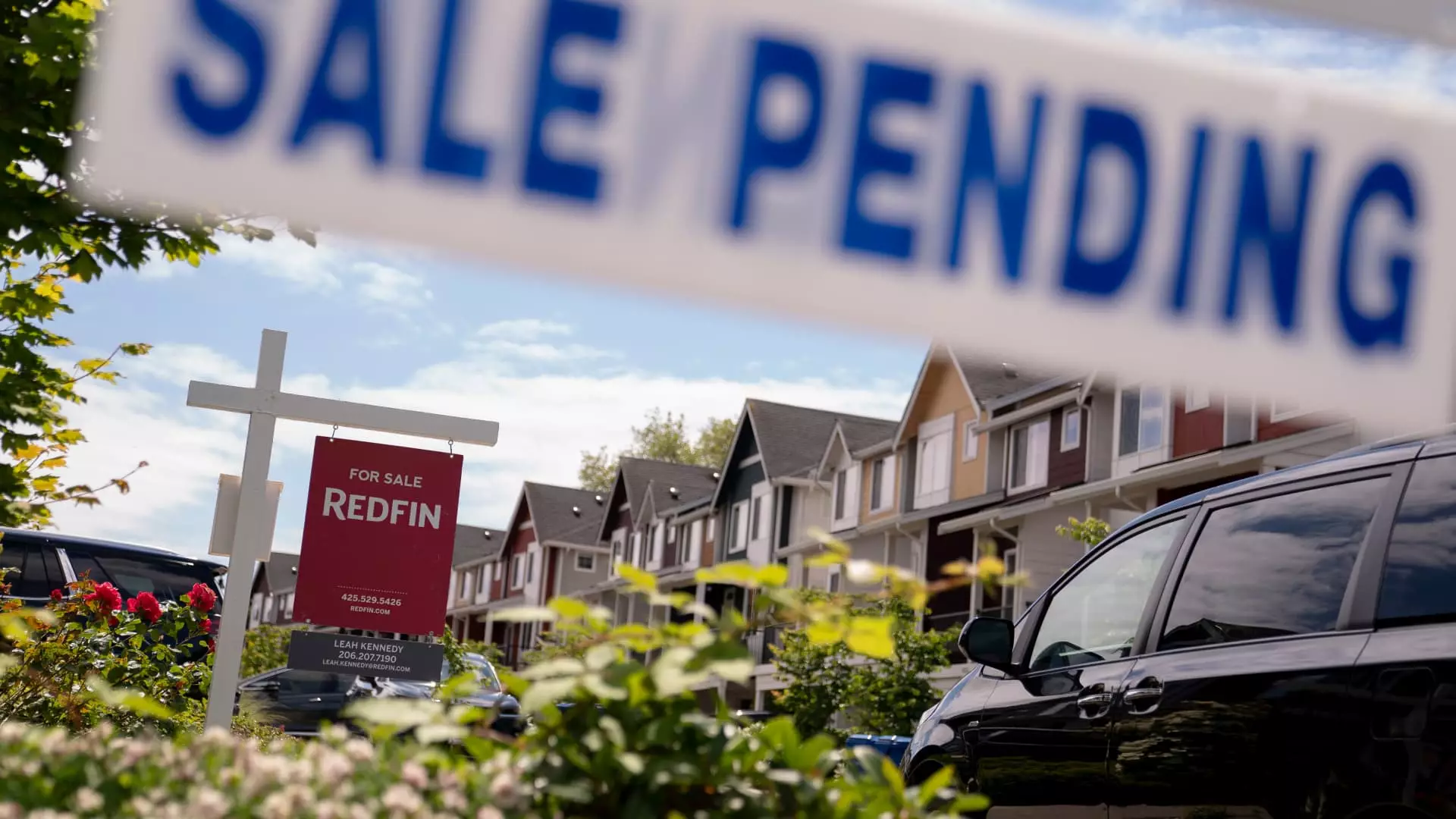Mortgage rates dawdled at trivial levels for much of early 2023, making homebuying seem like an achievable dream for many. However, the recent spike, where average rates for 30-year fixed mortgages surged to 6.81%—the highest since February—casts a long shadow over the housing market. This dramatic increase has triggered a substantial 8.5% decline in mortgage applications, leaving countless would-be homeowners caught in a conundrum, forced to navigate the shifting tides of interest rates.
The current situation is indicative of a larger systemic problem. The Mortgage Bankers Association’s seasonally adjusted index reveals a stark trend: a decline in mortgage activity, which can be viewed as a reflection of economic anxieties that plague the broader landscape. As people flounder in uncertainty and face rising costs of living, the thought of committing to a long-term investment like a home becomes daunting.
An Unpredictable Market: Riskier Bets on the Rise
Interestingly enough, even as the market contracts in terms of mortgage applications, there is a flicker of resilience amongst buyers. Although overall demand took a downturn, the fact that home purchase applications eked out a 13% increase from the same period last year might seem promising at first glance. However, with a 30% surge in active inventory compared to last year, it brings to light that buyers are confronting a market characterized by expanded choices but reduced affordability.
Many potential buyers are now gravitating towards adjustable-rate mortgages (ARMs) in an attempt to secure lower monthly payments. This strategy is troubling. While ARMs can provide attractive initial rates—hovering around 6%—they are fraught with peril due to their inherent volatility. As we veer into an economic climate marked by rising inflation and fluctuating interest rates, the imprudent choice to chase lower payments with riskier loans could lead many into financial predicaments they may not be equipped to handle.
Mike Fratantoni, the Mortgage Bankers Association’s chief economist, astutely points out that “economic uncertainty and the volatility in rates” are likely causing potential buyers to hesitate. In a world where predictions can rapidly sour, the choice to enter the market without solid ground appears reckless at best. How does one justify exposing oneself to a loan structure that could swing wildly from manageable to unsustainable?
Refinancing Dilemma: A Double-Edged Sword
The refinancing market tells a similar tale of cautious optimism, albeit with a significant edge of trepidation. With refinancing applications plummeting by 12%, one could rightly question the viability and appeal of refinancing in the current market. However, to juxtapose this, the year-on-year increase of 68% in refinancing applications is a testament to the lingering effects of last year’s higher rates, suggesting that many are still underwater on their loans.
For homeowners seeking to refinance, the decision comes down to an analysis of risk versus reward. With current market fluctuations, those who linger in a holding pattern may quote themselves as victims of indecision. Yet, as Matthew Graham from Mortgage News Daily aptly highlighted, no one should take the stability of current rates for granted. It serves as a poignant reminder that the financial soil we tread on remains fragile, akin to walking a tightrope.
The housing market is undergoing a precarious transformation; the duality of rising inventory and rising mortgage rates is like a jigsaw puzzle—but without clarity on how to fit the pieces together. For center-wing liberals like myself, climbing out of this financial quicksand hinges on systemic changes that stabilize the preferences of homebuyers and rein in rampant market volatility. As the landscape unfurls, it remains essential to advocate for protections that empower buyers while ensuring institutional practices do not exacerbate an already dire situation. The stakes couldn’t be higher: misguided financial choices now could echo regret for years to come.

